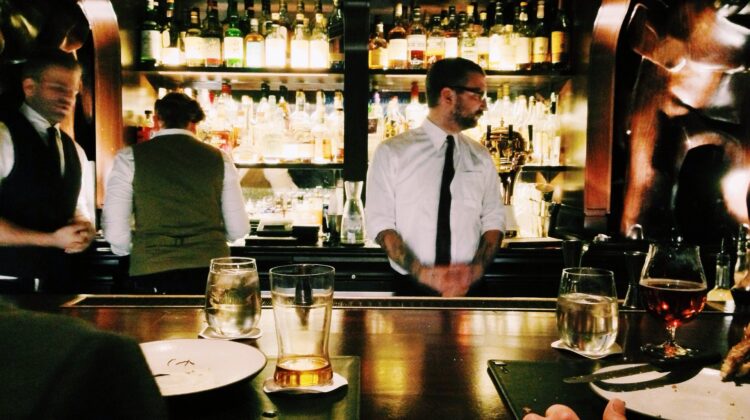

We have all been through the experience of the really, really noisy restaurant. These restaurants you run away from, after using all your energy to keep up with the conversation until the main is finished. Don’t even think about dessert.
The next time you are going to a restaurant, just take a quick look at how people are sitting on their chairs. You will know right away the kind of sound environment you will have on the menu.
Many diners consider the quality of the restaurant’s sound environment just as important as the quality of the food and the quality of service.
Just recently, the website The Fork (restaurant booking and reviews, a TripAdvisor company) has even added sound level to the list of reviewed criteria, ranging from “very quiet” to “very noisy”.
We’ve all experienced it – the Lombard Effect
Restaurants are probably the greatest example of the so-called Lombard effect. This effect, formalised by the French otolaryngologist Etienne Lombard in 1909, consists in the adaptation of our vocal effort when our environment is too noisy. It is not just talking louder, we also adapt our pitch, our enunciation and how we pronounce vowels, in order to be better understood. And it is a vicious circle: the higher the background sound level, the more we will amplify our vocal effort… resulting in increasing, even more, the overall noise level.
A lunch break that isn’t really a break at all
Exhaustion, headaches, difficulties in keeping conversations: the impact of noise on our lunch break is obvious. It spoils our good and friendly times, but when it comes to our canteen at work or in schools, noise also prevents us from “recharging our batteries” during our lunch break. When we are back from our break, we may be even more stimulated and tired than before, instead of being refreshed and ready to get back to work for the afternoon.
That moment when u can’t even hear yourself think over the noise in a restaurant. Love it.
— SA Chaves (@Poas84) September 18, 2016
Hearing – the forgotten sense on the restaurant scene
But noise in the restaurant also has more unexpected consequences! Our environment will influence how we perceive flavours, together with lighting or even colours. But what about our sound environment? For Charles Spence, professor in experimental psychology at Oxford university, the hearing is the only one of the five senses that we forget when we are considering our perception of flavours:
“When people think about flavour, they might think about taste, they might think about smell, they might think about what [the food] looks like, they might think about the texture and the mouth-feel—but they never think about the sound,” he says.
Charles Spence’s team showed that high sound will bring out sweetness while low sounds will amplify bitterness. This is something you can notice particularly in food or beverages that combine these two flavours, like chocolate or coffee. You can even test it yourself.
And at the other end of the spectrum we now also have this: restaurants that ask for total silence. Which can give you a nice moment of peace and quiet, with the added benefit of also making sure that no sound influences your taste buds!
Let’s finish this article with this canteen where the sound environment has been treated with free-hanging units and baffles. You can find more inspiration over here.
Written by Thomas Roul, French office acoustics specialist and blogger at S’entendretravailler.fr.

